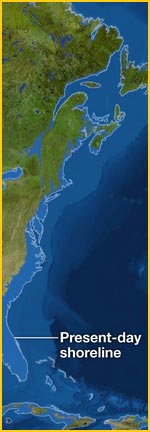Watersheds to Sea Changes
Our oceans are losing millions of sea life due to climate change, plastic pollution, and over-fishing.
Art can bypass fear and build knowledge, while promoting positive change to communicate our loss,
our choices and our future. – Kira Carrillo Corser, Director, Sea Changes ACT Project
Ocean Science Facts: Climate Change • Plastic Pollution • Over Fishing
The people involved in the Sea Changes Project see art as an INTEGRAL PART of the solution to dealing with Climate Change.
Sea Changes finds art is powerful in many ways. We build AWARENESS because the public needs civic engagement to save the oceans, we EDUCATE about science facts to PROMOTE innovative solutions, and we work collaboratively with leaders, schools, and nonprofits to BUILD COMMUNITY RESILIENCE.
Climate Change
“Science research indicates that 75% of the worlds coral reefs are threatened…”
– Climate Change Impacts in the United States, published 2014, U.S. National Climate Assessment/US. Global Change Research Program
ACIDIFICATION IS KILLING THE OCEAN CORAL REEFS, SHELLED CREATURES, AND THE SMALLEST ORGANISMS AT THE BOTTOM OF THE OCEAN FOOD CHAIN
Scientists know Climate Change is increasing because of the burning of fossil fuels. For example factories and homes burning coal, cars and trucks running on oil are all increasing the levels of carbon dioxide in the atmosphere. Because water covers a huge part of our planet and water absorbs.
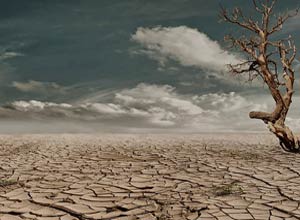
The Earth Is Heating Up Creating Ocean Changes
Most of the carbon dioxide that is released into the atmosphere ultimately ends up in the oceans. The oceans have been absorbing large amounts of carbon dioxide since the Industrial Revolution (approximately 1750) This increasing amount of carbon dioxide in the oceans is causing ocean acidification.
When carbon dioxide enters the ocean, it combines with seawater to produce carbonic acid, which increases the acidity of the water. The term acidification refers to the process of the oceans becoming more acidic.
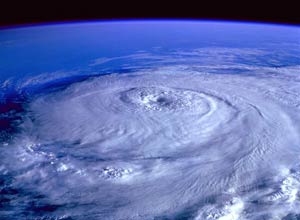
Future Weather May Become Even More Extreme
Why is acidification bad? A consequence of the oceans becoming more acidic is the binding up of carbonate ions, which are used by marine creatures to make their calcium carbonate shells and skeletons. As the availability of carbonate ions decreases, it becomes more difficult for these animals to build their calcium carbonate structures. Imagine trying to build a house while someone keeps stealing your bricks.
Even more significant is the rate at which ocean chemistry is changing. The current rate of acidification is at least 100 times faster than any time period over the last few hundred thousands years and is it most likely unprecedented in Earth’s history. Carbon dioxide is being absorbed so rapidly that it is likely that many marine organisms will not be able to adapt to the quickly changing conditions.
Corals are very susceptible to the impacts of ocean acidification and coral reefs are some of the most beautiful and biologically diverse habitats on the planet. Most are now affected and some are bleached, and look white because they are dead.
LINKS FOR FURTHER RESEARCH:
- www.climatecommunitication.org – Short and easy to understand information on Climate Changes
- Ocean Acidification – North Carolina Aquarium simple video describes Acidification in the ocean
- NOAA – Extensive video on the subject acidification. NOAA’s website www.noaa.gov
Plastic Pollution
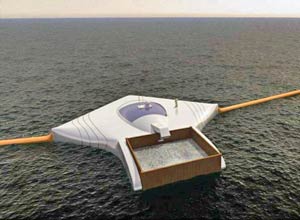
19-year-old Boyan Slat has unveiled plans to create an Ocean Cleanup Array that could remove 7,250,000 tons of plastic waste from the world’s oceans. Read Full Article …
THE UNITED NATIONS ENVIRONMENT PROGRAM ESTIMATED IN 2006 THAT EVERY SQUARE MILE OF OCEAN CONTAINS 46,000 PIECES OF FLOATING PLASTIC.
Giant garbage patches, one twice the size of Texas, can be found floating around in the oceans. Tiny plastic beads used in hundreds of toiletries like facial scrubs and toothpastes have even been found in our Great Lakes—the largest group of freshwater lakes in the world!
All this plastic pollution is not only a problem for the earth, it’s bad for health of all organic life’s health.
- Once discarded, plastics are weathered and eroded into very small fragments known as micro-plastics. These together with plastic pellets are already found in most beaches around the world, ocean creatures think the plastic looks like fish eggs and eat it.
- Plastic debris causes the deaths of more than a million seabirds every year & more than 100,000 marine mammals.
- Plastic becomes concentrated in ocean current vortexes, called gyres. There are now 5 gyres in our oceans. Find out more of the United Nations report at www.unesco.org
LINKS FOR FURTHER RESEARCH:
Over Fishing & Sustainability
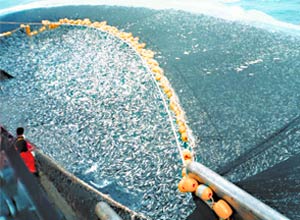
Overfishing Has Become A Major Problem Throughout The World’s Oceans
Ocean over fishing refers to the taking of wildlife from the sea at rates too high for fished species to replace themselves. EXAMPLE: Led by the sushi market in Japan, the global demand for tuna has driven stocks of the once plentiful species to the brink of collapse.
Fisheries in the Mediterranean, where this catch was landed, are in particular peril, with some studies showing highly prized blue fin tuna near extinction there. Some sharks and some fish are already extinct.
Giant ships equipped with radar and high tech gear make it possible to find and catch tremendous numbers each trip, and some fishermen use blasting and nets that destroy coral as they drag.
LINKS FOR FURTHER RESEARCH:
- www.ocean.nationalgeographic.com/ocean/critical-issues-overfishing
- www.worldwildlife.org/threats/overfishing
- http://www.
oceanconservancy.org/our-work/ fisheries/
BUY SUSTAINABLY CAUGHT FISH SEE THE LIST HERE AND GET THE APP …
How Scientists & Artists Are Involved
EXAMPLES OF HOW ART IS AN INTEGRAL PART OF THE SOLUTION
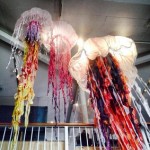
Giant Jelly Fish created from recycled plastics, Marjorie Pezzoli & Debb Solan
We INSPIRED others, like First Night Monterey to focus their new Years theme for two years on Sea Changes INCLUDING kids and families from under-served communities, scientists, students and professors from CSUMB.
The Oceanside Museum of Art provided INFORMATIONAL MATERIALS about what the average person can do to make a difference as part of our exhibition; the San Diego Visual Arts Network’s DNA of Creativity group printed a take-away card, seven staff members of the Birch Aquarium came to the art exhibition and are discussing using art and new technology.
Because of our work; peace groups in Atlanta now see and want to do art to educate others because they say saving the planet species is a justice issue.
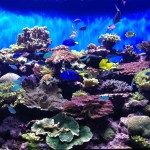
Birch Aquarium Regeneration Tank
Our team member Michelle Kurtis Cole is still working on building a larger glass base to regenerate coral reefs in the ocean, after our successful collaborating with Aquarium Curator Fernando Nosratpour at the Birch Aquarium, Scripps Institution of Oceanography in La Jolla, CA.
The making of art that has meaningful purpose builds emotional strength and resilience to deal with life’s difficult times. Two of out team members felt their work on this project helped them cope with family death and tragedy.
“I know that working on this project helped save me when our daughter died. It gave me a focus and helped me heal.” – Sea Changes Team Member
SCO Artist Spotlight
Kira Carrillo Corser
Kira is Team Leader and director who has produced 4 videos on this project and outreach to communities. She recently presented on a panel on Building Resilience through the Arts, at a California Climate Change Adaptation Forum in Sacramento. She also presented the Virtual Undersea Experience in the main reception for 800 attendees, mostly scientists, mayors and city council members from across the state. She will be projecting videos in and on the Monterey Conference Center, at First Night Monterey in December 2014. Buy Tickets here.
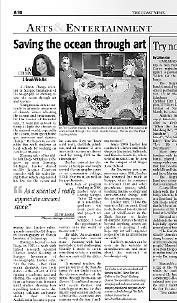
Article of Dr.Tim’s SCO Classes
Tim Lueker, Ph.D.
A Sea Changes Team Member and Scripps Institution of Oceanography Carbon research scientist, teaches high school classes combining art and science. Students build mosaics of coral reef life, human impacts, and alternatives to reduce carbon emissions. They learn about science through making art. See his research on carbon emissions here: Tim lueker | The Keeling Curve – Scripps Institution of Oceanography Check out Dr. Tim’s mosaic art classes at: www.drtimfineart.com
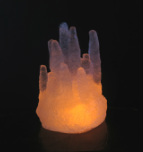
Regenerating Coral on Glass Art
Michelle Kurtis Cole
Sea Changes Team Member has successfully grown coral by collaborating with Fernando Nosratpour, Associate Curator, Birch Aquarium at Scripps Institution of Oceanography, UCSD, La Jolla, CA with help from Kira Carrillo Corser, NOAA scientist Dale Sweetham and Scripps Grad student Caitlin Whalen.
![]() ACT Now!
ACT Now!
RISING SEAS
Animated map of what Earth would look like if all the ice melted.
National Geographic interactive map of Rising Seas.

Simple to understand Ocean Acidification Video.
Boyan Slat
at TED

How the oceans can clean themselves

